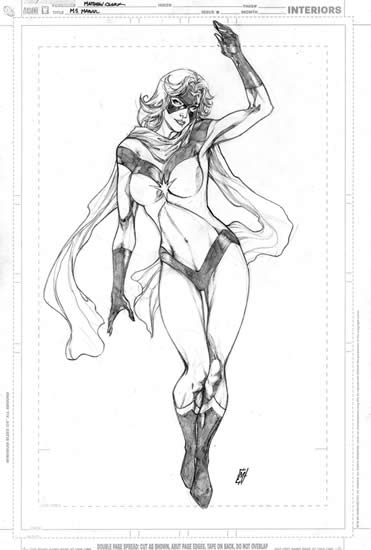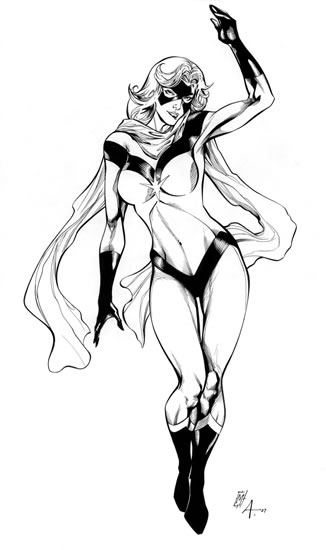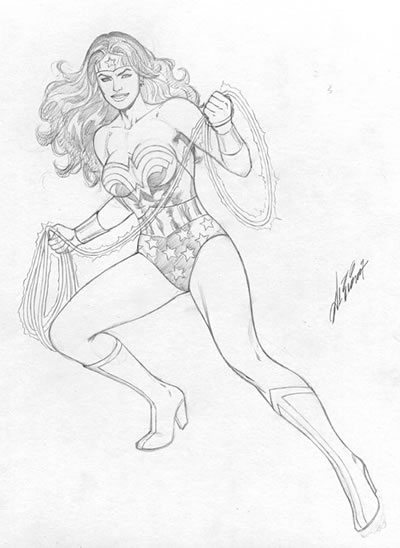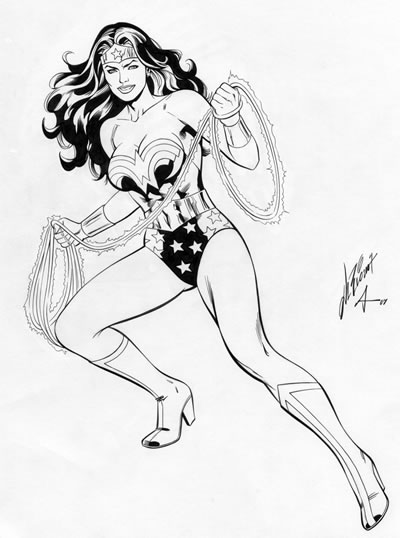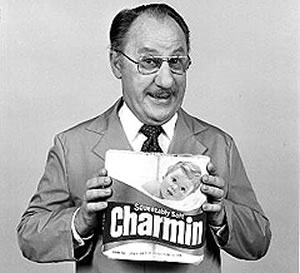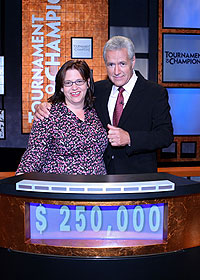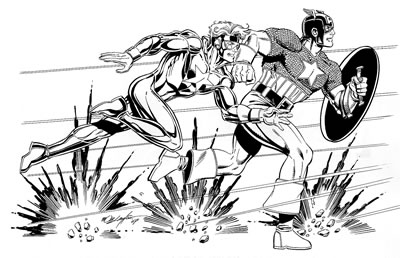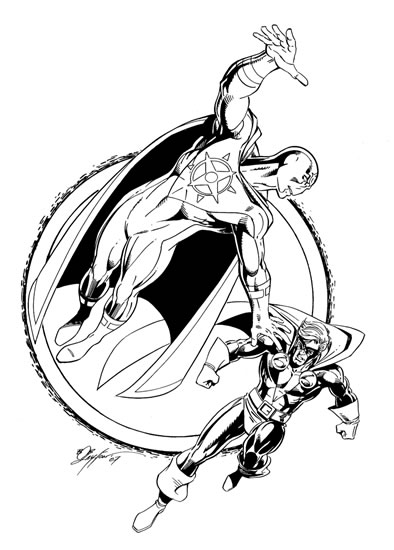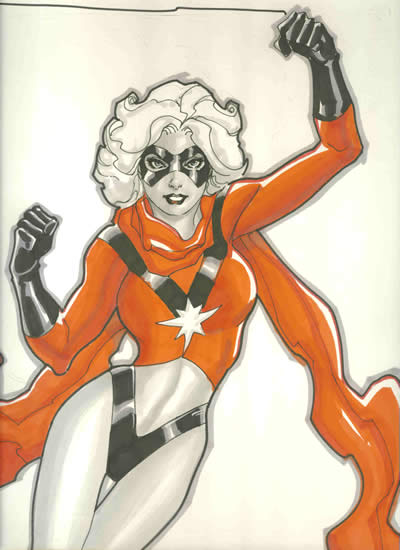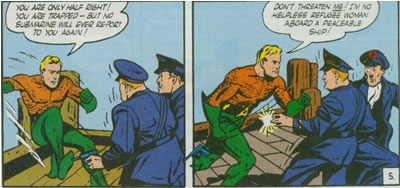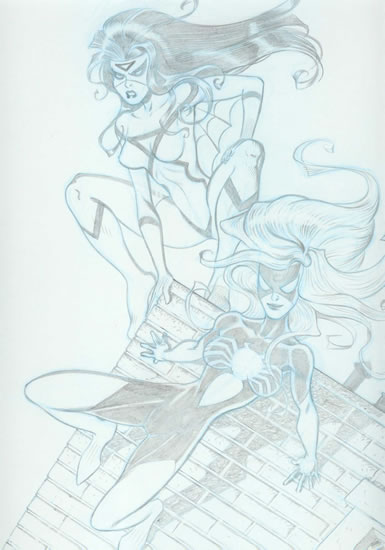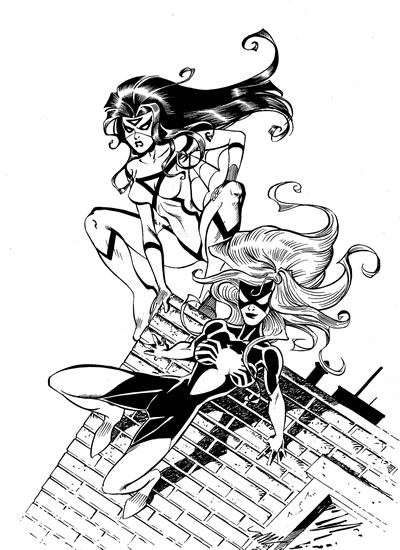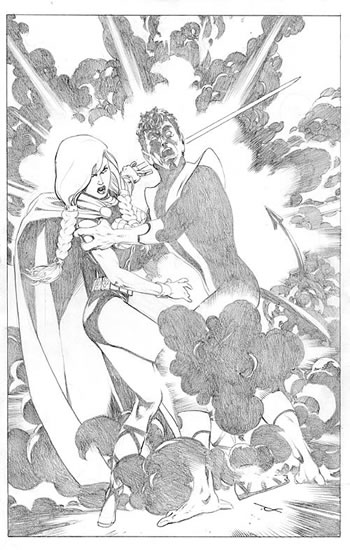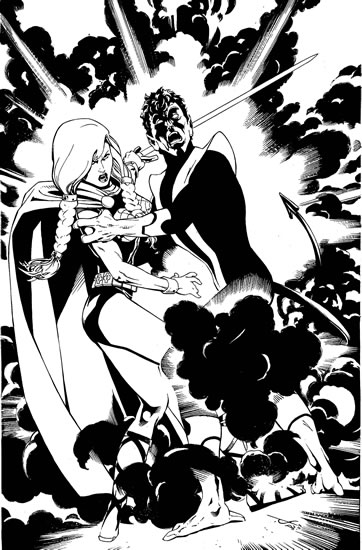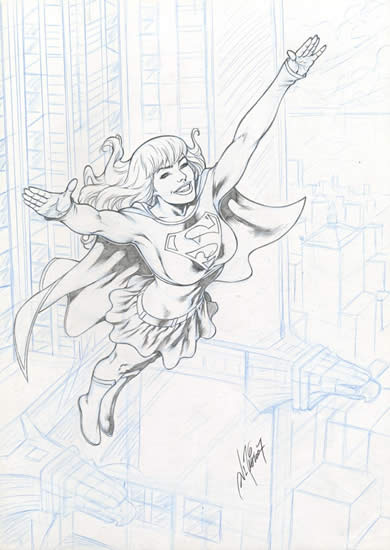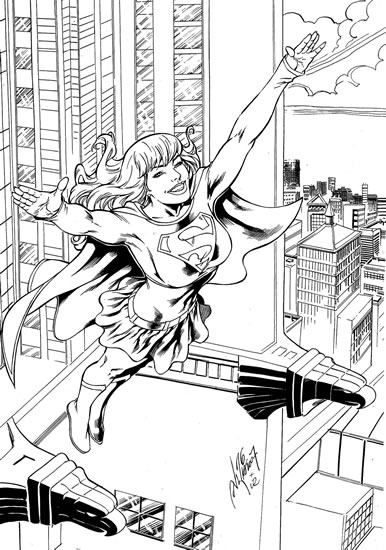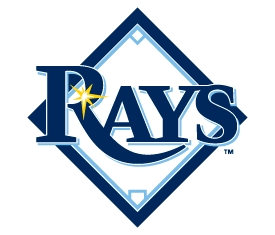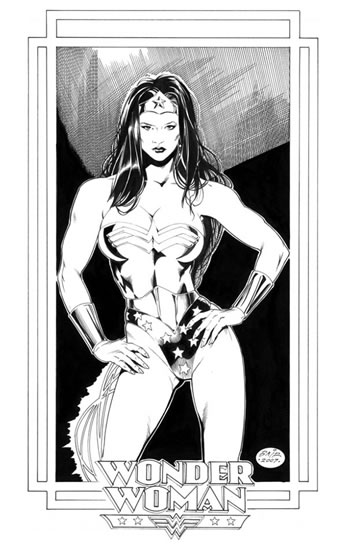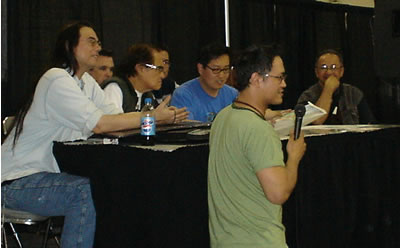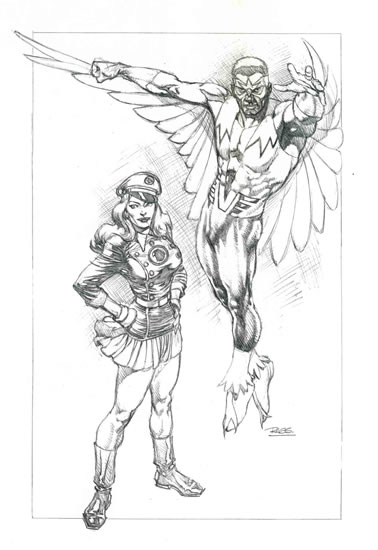Black Friday, part two
If you haven't yet read last Friday's post, go check it out. We'll wait for you.
Back already? Did your lips get tired?
Now let's dive into the second half of our Almond Joy. (Because with Almond Joy, you can have half, and still have a whole. I love that.)
The first drawing we're going to examine posed an interesting challenge for Bob, but one that I knew he could ably handle. Brazilian artist Jorge Correa Jr. — best known for his work on the Stargate SG-1 comic books for Avatar Press — created for my Common Elements series this pairing of a fetching Donna Troy, the original Wonder Girl, with longtime Avengers stalwart Simon Williams, code name Wonder Man.
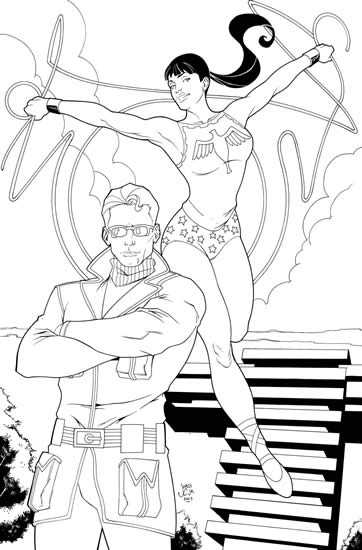
I love Jorge's composition and execution of this scenario, and the spot-on personalities with which he invests the characters. As you can see, however, he made the artistic decision to ink the piece in an open fashion, primarily in outline.
While this technique works perfectly well for a comic page that will be enhanced by the talents of a digital color artist (who will add shadow and dimension to the published art using computer-based effects), it's less than optimal for a drawing intended for display in its raw, black-and-white state. To my eye, Jorge's sparing use of defining shadow (known as "spotting blacks" in comic art parlance) gave the piece a cold, off-putting feel.
To the rescue rode the cavalry, in the person of Bob Almond.
Bob had previously completed the inking on my Brandon Peterson Supergirl pinup, which the original artist had inadvertently left unfinished. Knowing Bob's uncanny ability to mesh his inking style with practically any pencil artist's technique, I felt confident that he could tackle the even greater challenge of blending his own ink line with Jorge Correa's to add depth and dimension to this already finished drawing. And, of course, I was right.
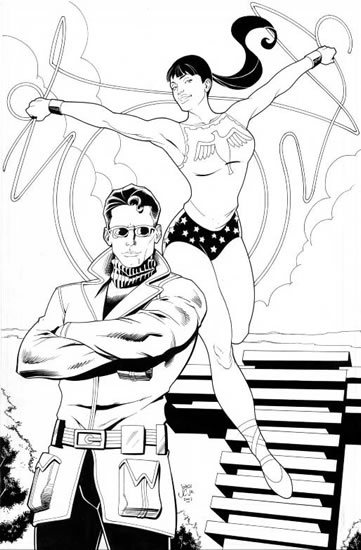
I asked Bob:
What's your philosophy about spotting blacks? Obviously, your approach will vary somewhat from one penciler to another. But in general, when you look at a new piece of pencil art, how do you start thinking about where the blacks will go, and exactly how much you're going to add?Here's the reply from our master inker:
This piece needed some contrasts, IMHO, to bring out the elegant line work already established. But I try not to be random about it. I follow general light source and shadow rules, and try not to be "spotty" with the blacks.In last Friday's post, we saw Mr. Almond's work on a classically styled Wonder Woman pinup by one of my favorite pencilers, Al Rio. Our fourth and final project in this group would once again bring together the talents of these two great artists, but in a much more complex fashion.
Applying blacks can help add to the composition and design of the image, as any followers of Mike Mignola (the creator of Hellboy) can attest.
As a preliminary rendering for a commission project, Al Rio drew this rough sketch of that legendary couple, Spider-Man and his bride, Mary Jane.
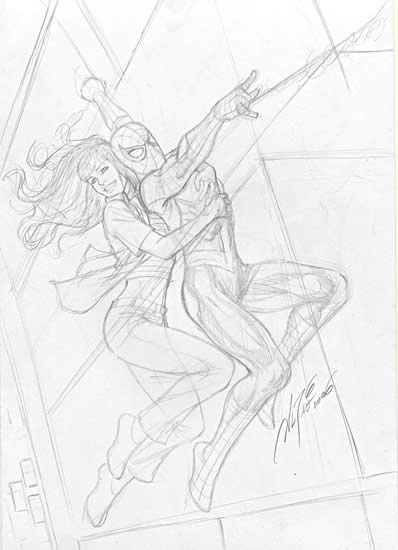
Bob Almond's completion of this artwork would require substantial penciling, adding a detailed urban background that Rio merely suggested with a few well-placed lines.
The transformation in the finished piece is awe-inspiring. Anyone viewing these two images together can plainly see that the inker's job — contrary to persistent misbelief — consists of far more than simply tracing the penciler's lines.
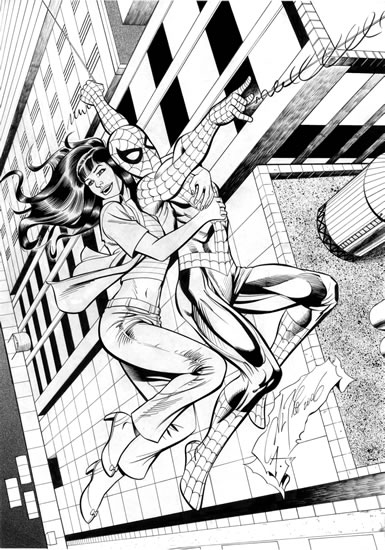
Take note here of the variety of techniques Bob uses to create texture, especially the rooftops of the buildings and Mary Jane's flowing hair. I pointed this out to Bob:
You excel in the use of texturing effects. How did that area of your artistry evolve?Mr. Almond's answer:
Around the mid- to late '90s, I was inking mostly in brush, and getting much better at it. But I felt that over time I was being pigeon-holed as that "clean, slick inker" guy, and it was limiting the kinds of work I could be hired for.As Bob observes in his online gallery, he has completed nearly two dozen commissions for me over the past few years, and hundreds more for other collectors. He remains in demand for published projects also, having recently completed runs on Marvel's Annihilation: Conquest—Quasar and Wildstorm's A Nightmare on Elm Street.
So, after a couple of years of working with Sal Velluto (the penciler with whom Bob teamed for a highly regarded run on Black Panther), we had discussions about using various markers and different approaches to the work. Along the way, I started to increase the use of textural effects to make my work less "clean and slick": spattering and smudging ink with a toothbrush, my finger, found objects, etc.; dry brush; scraping razor blades through the work; erasing over ink; and grainy crayon textures.
There are also the various Zip-a-Tones and rub-on Instantex texture sheets that I've used fairly regularly all along. I stocked up a considerable inventory in the early '90s, and it's good that I did, since they don't make that stuff any more, except from manga-based art suppliers. Not that one needs to use screens much any more, due to the advanced digital coloring done today, but it sure pays off with black-and-white commissions.
Given the broad range of his work, I asked Bob:
In your career, you've inked hundreds of characters. Do you have favorites? Are there characters you've longed to work on, but never had the opportunity (or perhaps fewer opportunities than you'd like)?Upon reflection, the Squiddy Award-winning inker opined thus:
I guess working on the classic DC, and especially Marvel, characters excites me the most, since I grew up with them in the Bronze Age, and I have a considerable amount of Silver Age titles as well. I don't recall any favorites that I have yet to ink, but as a fan, I never tire of Avengers commissions. (The "good girl" commissions are a thrill, too!)We here at SSTOL thank Bob Almond, both for his cogent comments and for his always amazing art.
I have more of a chance to ink a diversity of characters through commissions, thankfully, since my work on classic characters in the comics is more limited and luck of the draw. I was ecstatic to be hired for Warlock, JSA, and Black Panther, but for every high-profile project, there's also the lower-profile material which very few may see. They are always fun to do, since you often get a little bit more freedom with the work. Sometimes you get to establish with the penciler a particular look for the characters that other artists will use down the road — something you don't usually get to do with the classic "big guns."
I've been very lucky for all the work I've had over the last 15 years, and I can't complain. Nostalgia motivates me the most, but I find that good comic art of various styles will inspire me in general. Just to be doing comics in some capacity is a lifelong dream. Ink runs in my veins, dude!
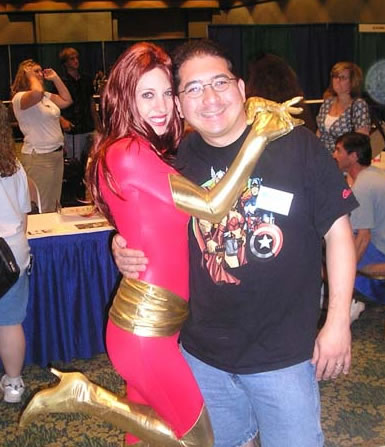
And that's your Comic Art Friday.
Labels: Comic Art Friday

